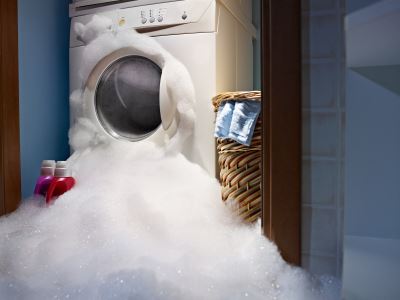Any appliance in your home with a pipe or other fixture attached to a water line has the potential to develop blockages or leaks and cause serious flooding throughout your home.
Toilet
Let’s start with the obvious and possibly the biggest culprit. The average home in Atlanta has an equal number of bathrooms for the number of bedrooms. If you have a four bedroom home, for example, chances are you have four bathrooms as well. That means the potential for overflowing toilets can occur multiple times throughout your home. Overflowing toilets are caused by a variety of things, from kids flushing the wrong things down, to a malfunctioning float that allows too much water in the tank.
Water Heaters
When water begins puddling around the base of a tank water heater, the leak is usually due to a malfunctioning temperature or pressure relief valve, corrosion in the tank, or a leaky plumbing connection. If it’s the water tank, the entire water heater will need to be replaced. Like any appliance in your home, with regular maintenance, you can extend the life of your water heater.
Washing Machines
If you’ve ever had a washing machine leak, you know the results can be instantaneous and disastrous. Washing machines can leak in one of six places: the hose connections, the inlet connections, the center post gaskets, the outer tub, the air dome seal, or the pump. Before you tackle the machine itself, be sure the water isn’t due to a clogged drain in the floor.
Dishwashers
Like the washing machine, dishwashers overflowing can produce a lot of water in a short period of time. Often the cause is too much detergent. It can also be using the wrong detergent in the dispenser. A malfunction in the float switch or a strainer clog with food or debris can also cause problems. If none of these exist, chances are it’s with the appliance’s plumbing connections.
Refrigerators
Refrigerators produce a lot of moisture, particularly when you use it frequently. Every time you open the door, warm air passes over the condenser coil, which creates condensation. This condensation pools at the bottom of your refrigerator. Most refrigerators have drain lines to siphon off excess moisture. Add in water supply lines for ice makers and drinking water features, and you’ve created the potential for a lot of different leaks and supplies.
Have you checked water supply lines to each of these appliances? Do you perform regular maintenance to ensure all are running optimally?
Have questions? We can help.

